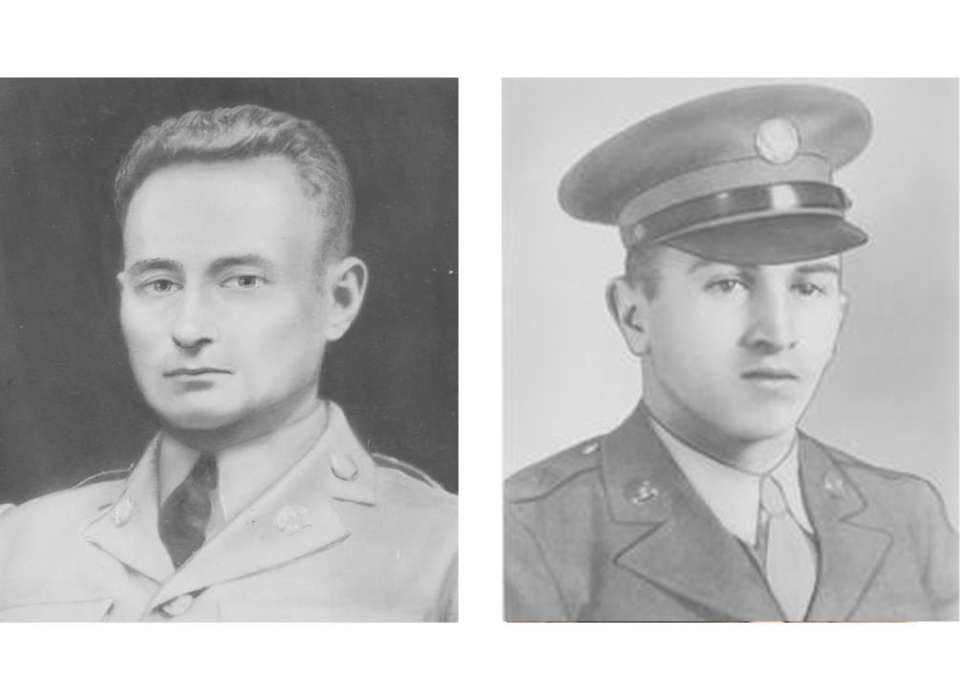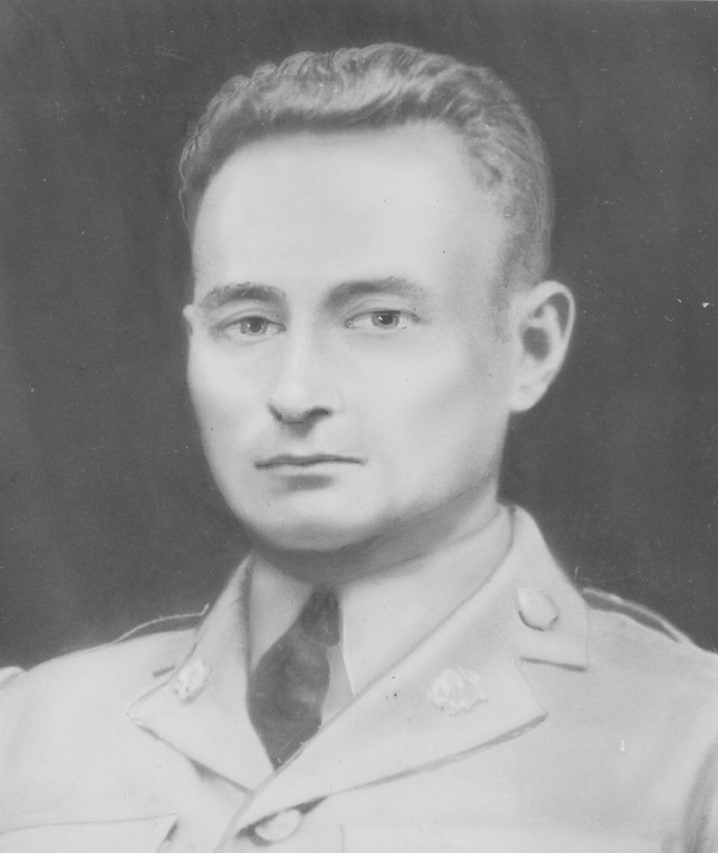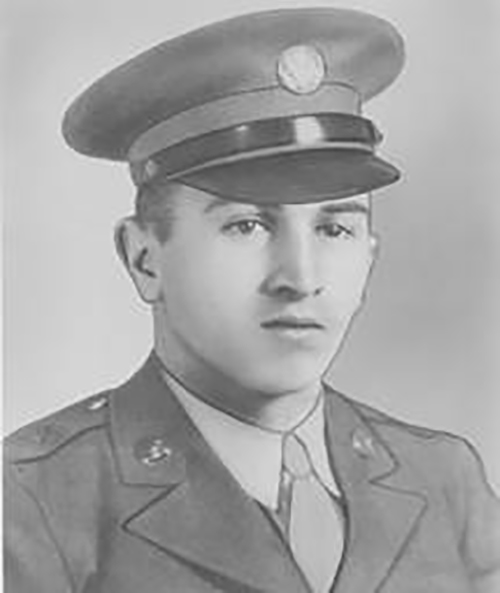Top image: Technician Lewis Hall and Sergeant William Fournier (left to right). Portraits and citations courtesy of the Congressional Medal of Honor Society.
Technician Lewis Hall
Technician Fifth Grade Lewis Hall from Obetz, Ohio, was born March 2, 1895, and was 47 years old at the time of his action. Serving with the “Cacti” of 35th Infantry Regiment, 25th Infantry Division at Guadalcanal in the Solomon Islands, he fought not just the Japanese, but the unhealthy tropical conditions of the jungle. After relieving the 1st Marine Division, his unit found itself fighting near Mount Austen, often referred to at the time as the “Seahorse” because of its distinct shape. In the ensuing action on January 13, 1943, Hall’s unit was attacked by superior numbers of Japanese infantry. With the enemy approaching and men in his unit being killed or becoming casualties, one of the unit’s machine guns now lay idle. Taking the initiative, he and another soldier manned the idle weapon and remained in position while others withdrew. Killing some 47 of the enemy, he repulsed the Japanese assault until he fell mortally wounded. He rests at Glen Rest Memorial Estate in Reynoldsburg, Ohio.
Awarded posthumously, his Medal of Honor citation read:
“For gallantry and intrepidity above and beyond the call of duty. As leader of a machine-gun squad charged with the protection of other battalion units, his group was attacked by a superior number of Japanese, his gunner killed, his assistant gunner wounded, and an adjoining guncrew put out of action. Ordered to withdraw from his hazardous position, he refused to retire but rushed forward to the idle gun and with the aid of another soldier who joined him and held up the machine gun by the tripod to increase its field of action he opened fire and inflicted heavy casualties upon the enemy. While so engaged both these gallant soldiers were killed, but their sturdy defense was a decisive factor in the following success of the attacking battalion.”
Sergeant William Fournier
Born in Norwich, Connecticut, in 1913, William Fournier was raised in South Kingstown, Rhode Island. When his mother died in 1914, his aunts and uncles took him in. At the age of 18, he moved to Maine and worked as a hired hand and a driver. Fournier enlisted in the US Navy in 1931 and served almost a decade in the naval service. Eventually he joined the Army and was assigned in September 1940 to the “Cacti” of the 35th Infantry Regiment, 25th Infantry Division. After relieving the 1st Marine Division on the island of Guadalcanal, his unit was conducting operations on what was referred to as the “Seahorse” of Mount Austen, on January 13, 1943. Attacked by a superior number of Japanese infantry, his unit suffered numerous casualties. As a result of the enemy advance, one of his unit’s machine gun positions now lay idle. Ignoring orders to withdraw, he and another soldier manned the weapon and repulsed the attack, killing some 47 enemy infantrymen. Wounded in the action, he died three days later. Twenty-nine years old at the time of his death, he is buried at the National Memorial Cemetery of the Pacific in Honolulu, Hawaii.
Awarded posthumously, his Medal of Honor citation read:
“For gallantry and intrepidity above and beyond the call of duty. As leader of a machine-gun section charged with the protection of other battalion units, his group was attacked by a superior number of Japanese, his gunner killed, his assistant gunner wounded, and an adjoining guncrew put out of action. Ordered to withdraw from this hazardous position, Sgt. Fournier refused to retire but rushed forward to the idle gun and, with the aid of another soldier who joined him, held up the machine gun by the tripod to increase its field of action. They opened fire and inflicted heavy casualties upon the enemy. While so engaged both these gallant soldiers were killed, but their sturdy defensive action was a decisive factor in the following success of the attacking battalion.”
John Curatola, PhD
John Curatola, PhD, is the Samuel Zemurray Stone Senior Historian at the Jenny Craig Institute for the Study of War and Democracy.
Cite this article:
MLA Citation:
APA Citation:
Chicago Style Citation:







![Max Fuchs, New York City cantor, sings as Rabbi Sydney [sic] Lefkowitz, Richmond, VA, conducts the first Jewish services from Germany.](/sites/default/files/styles/max_650x650/public/2025-10/image1.jpg)



